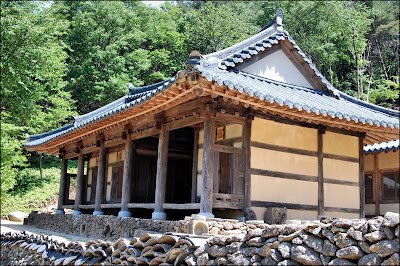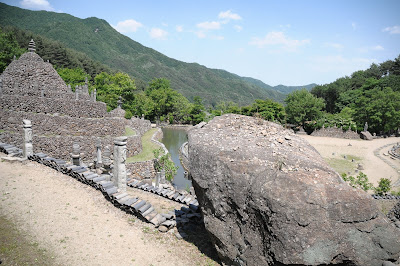Master Choi Chi-Won of Shilla Dynasty and Doseon Guksa(court appointed Buddhist priest) of Goryeo dynasty were among some of the great Seon Master( those who have been enlightened to the true self ) who called Cheonghakdong "one of the great places of the East".
Features of Cheonghakdong Village in South Korea:
- Located on the southern foot of Samsanbong Peak on Mt. Jirisan, the village preserves the traditional spirit of Korean life.
- The term 'Cheonghak' means a crane of blue feathers lives. This area had no role to play in the tumultuous history of the country.
- Electricity was introduced in this village only 20years ago.
- About 200 residents belonging to this community uphold the custom of tying hair in a knot, wearing Korean traditional clothing, and doing farm work in the traditional way.
- This is the sacred site of worshipping Hwanin, Hwanwung, Dangun and a monastery known as Samseong-gung.
- It houses about 1,500 types of stone towers which were made over 15 years. The towers are undergoing refurbishment in order to gather stones on the scared site of Sodo, the place where various ceremonies took place during the Three Kingdoms Era.




























































Panjeon ( onion pancake )








Admission prices for the village range from 1000 KRW for children to 3000 KRW for adults. The KNTO site says that the village is open 24 hours, while Samseonggung is open from 0830-1930 (Mar-Oct), 0830-1830 (Nov-Feb).
For more information, contact the Cheonghakdong Village Management Office of Mt. Jirisan National Park, +82-55-883-2609 (Korean only), or call the KNTO Travel Phone, +82-55-1330 (English, Korean, Japanese and Chinese )










Hi Dennis and Marjorie,
ReplyDeleteYou take such wonderful photos! I'm looking at these pics from Los Angeles and these pics are stirring something in my heart as my father is from Hadong Province. I would love to someday visit Hadong and walk the same paths that my father walked as a child. Sorry that this post is a bit overly sentimental. I sincerely thank you for these beautiful photos of my father's hometown. Thank you so very, very much.
very nice place & wonderful photos
ReplyDelete